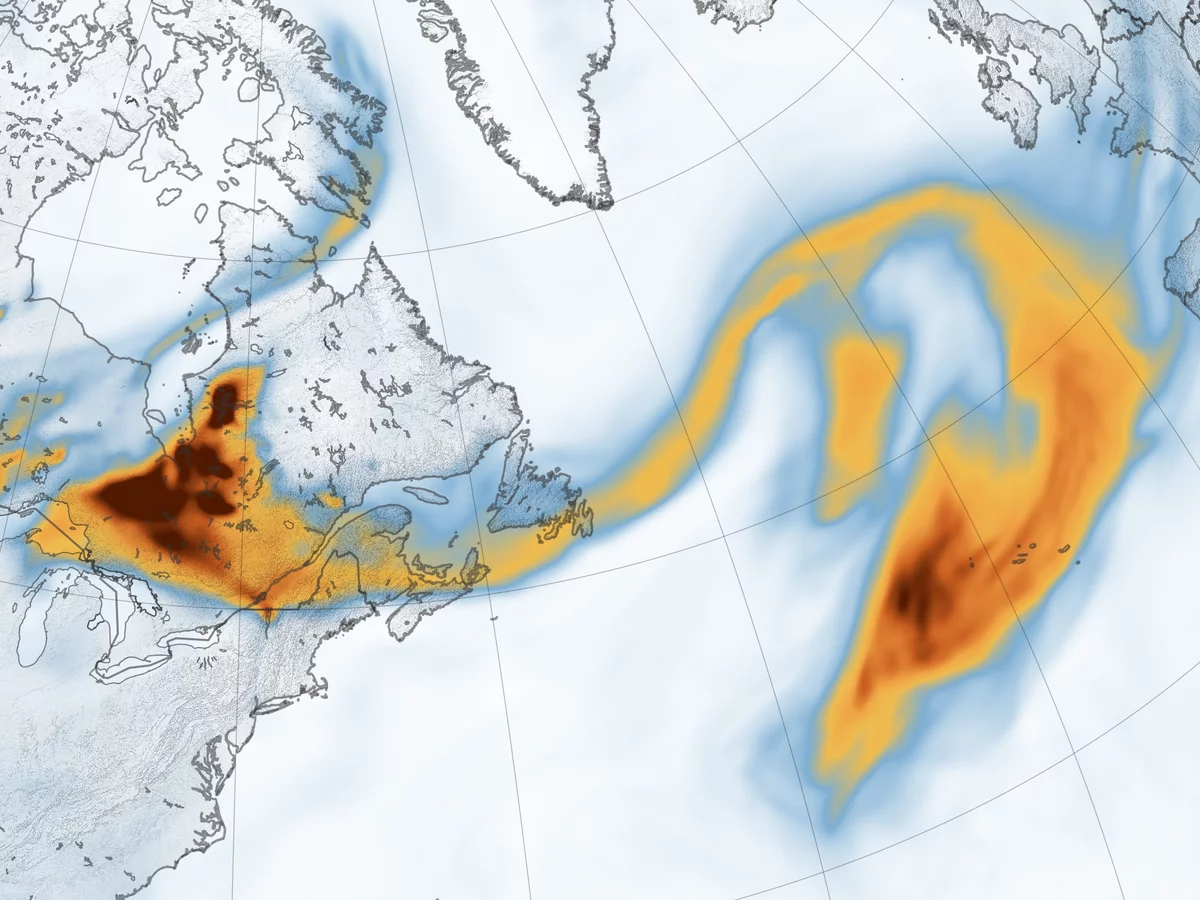Residents of Chicago woke up Tuesday morning to the worst air quality in the world, with hazy skies and the smell of smoke. Windy City residents weren’t the only ones dealing with the conditions; AirNow.gov showed other parts of Illinois as well as almost all of Michigan, Indiana, Ohio and Wisconsin and areas of Minnesota, Iowa, Kentucky and West Virginia affected.
The poor air conditions are the result of a wildfire season in Canada that’s among the worst in the nation’s history, with particular difficulties in the eastern province of Nova Scotia. As of early Tuesday afternoon, 488 active wildfires were burning across Canada, according to the Canadian Interagency Forest Fire Center, with more than half (259) considered to be “out of control.”
According to IQAir, as of Tuesday the United States had three Midwestern cities that found themselves ranked with the worst air quality in the world, along with Dubai of the United Arab Emirates and the cities of Lahore and Karachi in Pakistan.
Beginning in March 2023 and increasing in intensity around June, Canada has been affected by an ongoing record-setting series of wildfires. As the worst wildfire season in recorded Canadian history, eleven provinces and territories have been affected, with large fires in Alberta, Nova Scotia and Ontario and Quebec.
Smoke emitted from the wildfires has caused air quality alerts and evacuations in Canada, the United States, and Europe.
In mid-May, oil companies in Alberta, British Columbia, and Saskatchewan curbed production as a precautionary measure in parts of the provinces; this in turn drove up the price of oil.
The provincial government put a fire ban in place on May 16; it was lifted on May 24 due to improving conditions.
On May 19, the SPSA announced they would provided financial aid to residents impacted by fire-related power outages.
The government of Quebec sent two amphibious tankers to the province to assist with firefighting efforts.












